About Estonia
The Estonian nationwide awakening began in the 1850s as the leading figures began selling an Estonian national id among the many general populace. Its economic basis was formed by widespread farm buyouts by peasants, forming a category of Estonian landowners.
Your Age Is Actually Certainly Not Sucha Big Deal For A Lot Of Estonian Women
On the identical day, the airliner Kaleva was shot down by the Soviet Air Force. On 16 June, Soviets introduced an ultimatum demanding fully free passage of the Red Army into Estonia and the institution of a professional-Soviet government. Feeling that resistance was hopeless, the Estonian authorities complied and, on the subsequent day, the entire country was occupied. On 6 August 1940, Estonia was annexed by the Soviet Union as the Estonian SSR.
The Reformation in Europe started in 1517, and soon spread to Livonia despite opposition by the Livonian Order. Towns were the first to embrace Protestantism in the 1520s, and by the 1530s the vast majority of the gentry had adopted Lutheranism for themselves and their peasant serfs. Church companies were now carried out in vernacular language, which initially meant German, but within the 1530s the first spiritual services in Estonian also took place.
Your Grow Older Is Not Sucha Big Deal For The Majority Of Estonian Women
The entrance web page of Perno Postimees, the first Estonian language newspaper. Swedish king Gustaf II Adolf established gymnasiums in Reval and Dorpat; the latter was upgraded to Tartu University in 1632. In the 1680s the beginnings of Estonian elementary schooling appeared, largely as a result of efforts of Bengt Gottfried Forselius, who also launched orthographical reforms to written Estonian. The population of Estonia grew rapidly for a 60–70-12 months period, till the Great Famine of 1695–97 by which some 70,000–seventy five,000 people perished – about 20% of the population.
To legitimise the regime, a brand new constitution was adopted and elections had been held in 1938. Opposition candidates had been at bing allowed to take part, but only as independents, while opposition parties remained banned.
The Constituent Assembly handed a sweeping land reform expropriating large estates, and adopted a brand new highly liberal structure establishing Estonia as a parliamentary democracy. In 1924, the Soviet Union organised a communist coup attempt, which shortly failed. Estonia’s cultural autonomy legislation for ethnic minorities, adopted in 1925, is widely recognised as one of the liberal on the planet at that time. The Great Depression put heavy stress on Estonia’s political system, and in 1933, the right-wing Vaps movement spearheaded a constitutional reform establishing a robust presidency. On 12 March 1934 the acting head of state, Konstantin Päts, declared a state of emergency, falsely claiming that the Vaps movement had been planning a coup.
In 1857 Johann Voldemar Jannsen started publishing the first Estonian language newspaper and commenced popularising the denomination of oneself as eestlane . Schoolmaster Carl Robert Jakobson and clergyman Jakob Hurt grew to become main figures in a nationwide movement, encouraging Estonian peasants to take pride in themselves and of their ethnic identification. The national epic Kalevipoeg was printed in 1862, and 1870 saw the first performances of Estonian theatre. The average wing led by Hurt centered on growth of culture and Estonian schooling, whereas the novel wing led by Jacobson started demanding elevated political and economical rights.
The Päts regime was relatively benign compared to other authoritarian regimes in interwar Europe, and there was no systematic terror against political opponents. During the 1905 Revolution the first legal Estonian political events had been founded. An Estonian nationwide congress was convened and demanded the unification of Estonian areas into a single autonomous territory and an end to Russification. The Tsarist authorities responded with a brutal crackdown; some 500 people were executed and hundreds extra had been jailed or deported to Siberia. In the late nineteenth century the Russification interval started, because the central authorities initiated numerous administrative and cultural measures to tie Baltic governorates extra intently to the empire.
The pact’s secret protocol divided Eastern Europe into spheres of influence, with Estonia belonging to the Soviet sphere. On 24 September, the Soviet Union offered an ultimatum, demanding that Estonia sign a treaty of mutual help which would allow Soviet navy bases into the nation. The Estonian authorities felt that it had no alternative but to comply, and the treaty was signed on 28 September. In May 1940, Red Army forces in bases have been set in fight readiness and, on 14 June, the Soviet Union instituted a full naval and air blockade on Estonia.
The Russian language was used all through the education system and plenty of Estonian social and cultural actions were suppressed. Still, some administrative adjustments aimed at lowering energy of Baltic German institutions did show useful to Estonians. In the late Nineties there was a new surge of nationalism with the rise of distinguished figures like Jaan Tõnisson and Konstantin Päts. In the early 20th century Estonians began taking over control of native governments in towns from Germans.
Estonian Women For Dating Are Super Stylish
In 1600, the Polish-Swedish War broke out, inflicting additional devastation. The protracted war led to 1629 with Sweden gaining Livonia, including the areas of Southern Estonia and Northern Latvia. The wars had halved the Estonian population from about 250–270,000 individuals in the mid sixteenth century to one hundred fifteen–120,000 within the 1630s.
